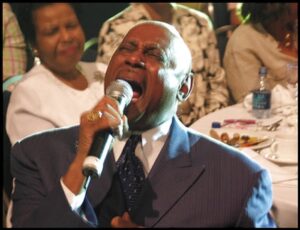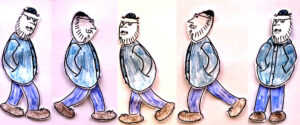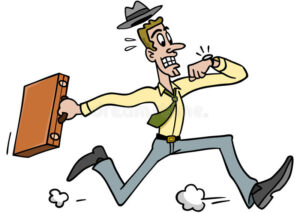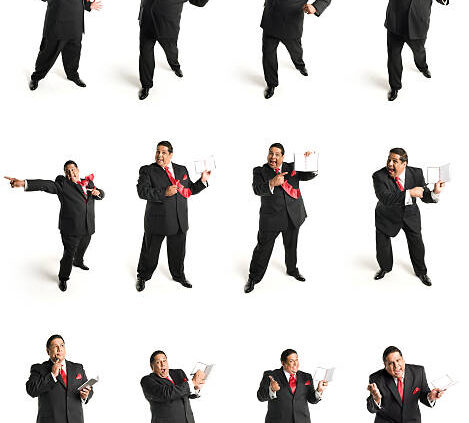Movement Adds A Message to the Sermon
Movement Adds A Message To The Sermon
We have been considering how important body language is to the preacher. In the last post we considered some of the ways to use your hands in gesturing in a way that will enhance your message. In this post we turn to the subject of movement. Movement adds a message to the sermon that you are preaching. Is it the same message that is coming out of your mouth? Again, I am indebted here to a book by Brandon Hilgemann called Preach and Deliver.
What Is Movement?
It will likely be helpful if we define a little bit of what I mean by movement. I’m referring here to what you do with your body as a whole–not just your hands. There is a great variety among preachers on how much they move during the message. Some pastors stand rooted behind the pulpit. Others will run up and down the aisles of the auditorium. What is best? Movement, I believe, is defined by personality and culture.
An Example
 A few years ago I had the privilege of attending a Good Friday service that was sponsored by a group of ministers in Muskegon, Michigan. About half the pastors were Caucasian, and half African-American. The crowd that evening was also about equally divided. It was a “preach-off” service, where a total of seven pastors shared thoughts, each focusing on one of the 7 last sayings of Jesus. The first preacher was African American. He started by encouraging the anglos in the audience to get engaged by adopting the Black congregation practice of shouting, waving, and moving in response to the message. He then preached powerfully, but with a LOT of movement.
A few years ago I had the privilege of attending a Good Friday service that was sponsored by a group of ministers in Muskegon, Michigan. About half the pastors were Caucasian, and half African-American. The crowd that evening was also about equally divided. It was a “preach-off” service, where a total of seven pastors shared thoughts, each focusing on one of the 7 last sayings of Jesus. The first preacher was African American. He started by encouraging the anglos in the audience to get engaged by adopting the Black congregation practice of shouting, waving, and moving in response to the message. He then preached powerfully, but with a LOT of movement.
The second pastor was anglo. He began his message by saying that he was different from his friend. The audience was not going to see so much movement from him, and he asked the African Americans to be quiet during his message. He didn’t like distractions.
The Lesson
It was a beautiful moment, where cultural and personality differences in preaching were acknowledged and accepted.
So, there is a personality and cultural aspect to movement that we need to acknowledge as we consider that movement adds a message to the sermon that you are preaching
Movements To Avoid
Movement, in a way similar to hand gestures, can add to or detract from the words you are saying. By movement I’m referring to what you do with your body as a whole. Here are some movements that can disengage your audience.
Pacing
Here’s how Hilgemann describes his youth pastor.
Like gestures, movement can either engage or distract your audience. For example, when I was a teenager, the youth pastor at my church was a pacer. He took three steps to the left, paused, three steps to the right, paused, and back again. He looked like a caged tiger at the zoo. (page 33)
I am a pacer. Moving from one side of the stage to the other is natural for me. I thought it was helping the audience connect. I was surprised, then, when one of the members of my church came and asked me not to go so far. You see, our worship center has some beams in it. My movement caused her to crane to one side of the visual line to see me on one side of the beam, and then crane to the other side of the beam to see me when I travelled over to the other side of the stage. My movement was distracting.
Frantic Steps
 Taking a quick trip across the stage can be very distracting, especially in this day of live streaming. The pandemic has changed church broadcasts a great deal. Most churches in my country now live stream or record the worship service. Therefore, a camera person must follow you. Quick movements may cause your audience to get dizzy.
Taking a quick trip across the stage can be very distracting, especially in this day of live streaming. The pandemic has changed church broadcasts a great deal. Most churches in my country now live stream or record the worship service. Therefore, a camera person must follow you. Quick movements may cause your audience to get dizzy.
Entering the Dark Spaces
Most preaching stages have lights on them. Don’t go from light to darkness. That can be very distracting to people as they focus on your face.
Movements That Add A Message To The Sermon
There are a couple of movements that will engage your audience in a positive way.
Excitement
When you are at a point of talking about something exciting, like the love of God for you, your movement should communicate the excitement that you feel. Let it be natural, and it will add a message to the sermon you are preaching.
Telling a Story
When you tell a story, action should accompany what you say. Again, these movements can be natural.
In the next post we’ll look at facial expressions as part of your message. For now, as you prepare your message, take note that movement adds a message to the sermon you are preaching, and adjust your preaching accordingly.



